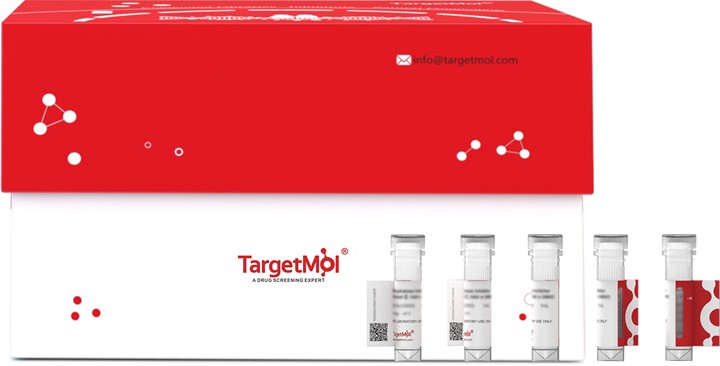 Your shopping cart is currently empty
Your shopping cart is currently empty
DEFB4A Protein, Human, Recombinant
β-Defensin 4A is a membrane-active cationic peptide that functions in inflammation and innate immune responses. There are at least 30 β-Defensins, which are distinguished from α-Defensins by the connectivity pattern of their three intermolecular disulfide bonds. Members of the Defensin family are highly similar in protein sequence. This gene encodes Defensin, DEFB4;, which has broad-spectrum antimicrobial activity and may play an important role in innate epithelial defense. They are highly expressed in skin and tonsils, and to a lesser extent in trachea, uterus, kidney, thymus, adenoid, pharynx and tongue. β-Defensin 4A has low expression in salivary gland, bone marrow, colon, stomach, polyp and larynx. No expression in small intestine. The 45 amino acid mature human BD3 shares 38% and 33% amino acid sequence identity with mouse and rat BD3, respectively.

DEFB4A Protein, Human, Recombinant
| Pack Size | Price | USA Warehouse | Global Warehouse | Quantity |
|---|---|---|---|---|
| 5 μg | $61 | - | In Stock | |
| 10 μg | $97 | - | In Stock | |
| 20 μg | $148 | 7-10 days | 7-10 days | |
| 50 μg | $272 | 7-10 days | 7-10 days | |
| 100 μg | $485 | 7-10 days | 7-10 days | |
| 200 μg | $869 | 7-10 days | 7-10 days | |
| 500 μg | $1,900 | 7-10 days | 7-10 days | |
| 1 mg | $2,730 | 7-10 days | 7-10 days |
Product Information
| Biological Activity | Activity has not been tested. It is theoretically active, but we cannot guarantee it. If you require protein activity, we recommend choosing the eukaryotic expression version first. |
| Description | β-Defensin 4A is a membrane-active cationic peptide that functions in inflammation and innate immune responses. There are at least 30 β-Defensins, which are distinguished from α-Defensins by the connectivity pattern of their three intermolecular disulfide bonds. Members of the Defensin family are highly similar in protein sequence. This gene encodes Defensin, DEFB4;, which has broad-spectrum antimicrobial activity and may play an important role in innate epithelial defense. They are highly expressed in skin and tonsils, and to a lesser extent in trachea, uterus, kidney, thymus, adenoid, pharynx and tongue. β-Defensin 4A has low expression in salivary gland, bone marrow, colon, stomach, polyp and larynx. No expression in small intestine. The 45 amino acid mature human BD3 shares 38% and 33% amino acid sequence identity with mouse and rat BD3, respectively. |
| Species | Human |
| Expression System | E. coli |
| Tag | Tag Free |
| Accession Number | O15263 |
| Synonyms | β-Defensin 4A,β-Defensin 2,β2,Skin-Antimicrobial Peptide 1,SAP1,hBD-2,Defensin,DEFB4B,DEFB4A,DEFB4,DEFB2,DEFB102,Beta-Defensin 4A,Beta-Defensin 2,Beta 2,BD-2 |
| Amino Acid | Gly24-Pro64 |
| Construction | Gly24-Pro64 |
| Protein Purity | Greater than 95% as determined by reducing SDS-PAGE. (QC verified) |
| Molecular Weight | 9 KDa (reducing condition) |
| Endotoxin | < 0.1 ng/µg (1 EU/µg) as determined by LAL test. |
| Formulation | Lyophilized from a solution filtered through a 0.22 μm filter, containing PBS, pH 7.4. |
| Reconstitution | Reconstitute the lyophilized protein in distilled water. The product concentration should not be less than 100 μg/ml. Before opening, centrifuge the tube to collect powder at the bottom. After adding the reconstitution buffer, avoid vortexing or pipetting for mixing. |
| Stability & Storage | Lyophilized powders can be stably stored for over 12 months, while liquid products can be stored for 6-12 months at -80°C. For reconstituted protein solutions, the solution can be stored at -20°C to -80°C for at least 3 months. Please avoid multiple freeze-thaw cycles and store products in aliquots. |
| Shipping | In general, Lyophilized powders are shipping with blue ice. Solutions are shipping with dry ice. |
| Research Background | β-Defensin 4A is a membrane-active cationic peptide that functions in inflammation and innate immune responses. There are at least 30 β-Defensins, which are distinguished from α-Defensins by the connectivity pattern of their three intermolecular disulfide bonds. Members of the Defensin family are highly similar in protein sequence. This gene encodes Defensin, DEFB4;, which has broad-spectrum antimicrobial activity and may play an important role in innate epithelial defense. They are highly expressed in skin and tonsils, and to a lesser extent in trachea, uterus, kidney, thymus, adenoid, pharynx and tongue. β-Defensin 4A has low expression in salivary gland, bone marrow, colon, stomach, polyp and larynx. No expression in small intestine. The 45 amino acid mature human BD3 shares 38% and 33% amino acid sequence identity with mouse and rat BD3, respectively. |
Dose Conversion
Calculator
Tech Support
| Size | Quantity | Unit Price | Amount | Operation |
|---|

Copyright © 2015-2025 TargetMol Chemicals Inc. All Rights Reserved.



